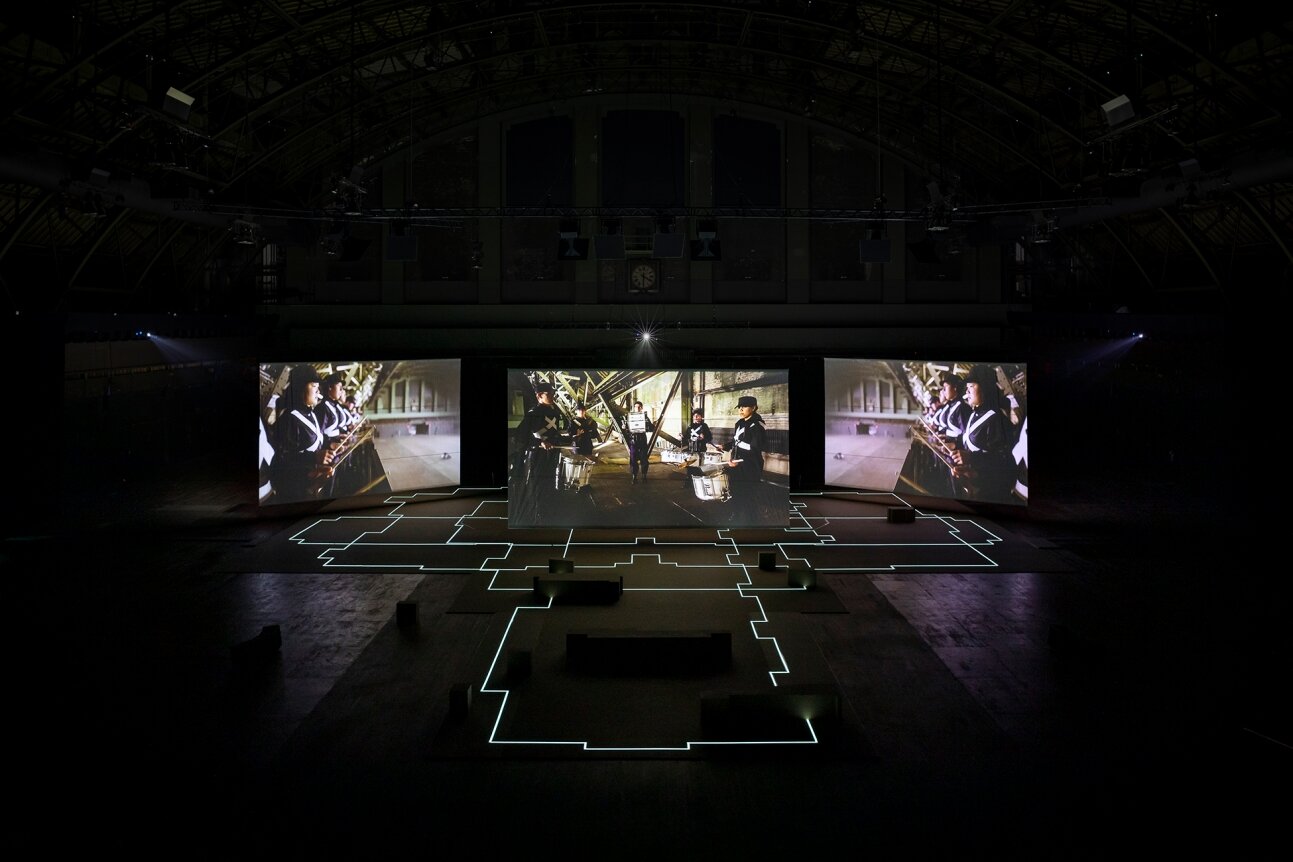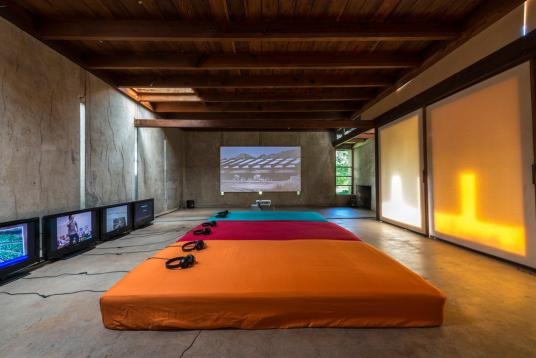
Multi-channel Video Installation
Mary Lucier Nest
IMA 78076: Multi-Channel Video Installation
Fall 2021, Thursday 10:10 am to 6 pm
Room: 543 Hunter North + Black Box
Instructor: Andrew Demirjian
Office: 520G Hunter North
Office hours:
Monday 1 pm - 2 pm (via Zoom)
Thursday 1:30 – 3:30 pm (in person)
and by appointment
Email: ademirji@hunter.cuny.edu
In this hands-on production course, we will create new multi-channel video installation artworks that are in conversation with the rich and diverse histories of this practice. We will engage with the technical, theoretical and aesthetic concepts that inform the production, post-production and exhibition of producing these immersive works.
Using both hardware and software methods for synchronizing sources, we will experiment with different vertical and horizontal configurations of multiple monitors and projectors to display student work. Projection mapping and sculptural techniques that investigate methods for breaking the rectangular frame will also be explored. In addition to multiple channels of video, we will also work with multiple channels of audio to create immersive environments. Students will gain hands-on experience working with a quadraphonic sound system and sub-woofer along with other speaker configurations.
Through a series of short readings, we will survey diverse perspectives, contexts and topics in this mode of production. We will also screen, critically analyze and discuss a wide array of practices from artists working in this medium. The course will be taught as a hybrid, with some classes via Zoom for discussing texts and learning post-production techniques and others in-person to set up monitors, projectors and speakers to test our work. Documenting the pieces created in class will be part of our working method, ensuring students are able to easily show the outcomes of their work for crits, grant proposals and future exhibitions.
Required Readings:
Due dates listed in the course schedule
o “Sites of Screening: Cinema, Museum, and the Art of Projection”, from Surface by Guiliana Bruno
o “The Editor”, Stefano Basilico
o “Video Installation: The Body, The image and the Space in Between”, Margaret Morse
o
o “Before and Besides Projection: Notes on Video Sculpture, 1974 – 1995”, Henriette Huldisch
o “Beyond the Cinematic Screen: Installations and the Internet”, The Essay Film After Fact and Fiction
(
part 2 of Beyond the Cinematic Screen )
o “Off the Wall: Video Sculpture and Installation”, from A History of Video Art by Christopher Meigh-Andrews
o “Certain Obliqueness”, Renée Green
o
o “From Ten Thousand Waves to Lina Bo Bardi via Kapital”, Isaac Julien
Suggested Readings:
Eye and Mind, Maurice Merleau-Ponty
Expanded Cinema, Gene Youngblood
Critical Response Process, Liz Lerman
Method of Evaluation:
1. Deconstruction Exercise 10%
2. Synchronized Diptych/Triptych Exercise 15%
4. Reading Responses 15%
5. Class Presentation 10%
6. Final Project 35%
7. Participation: 15%
Click here for Equipment List
Topic suggestions of artists for research presentation: here
Slides from class 2: Surface, Senga Nengudi
Slides from class 3: Aesthetic Strategies for Found Footage Artworks
Slides from class 4: History of Multi-channel Video Installation (Chris Meigh-Andrews slides
Slides from class 5: Morse reading + Kubata and Akomfrah
Slides from class 6: The Video Essay Part 1 - Farocki
Slides for working with diptychs and triptychs in Premiere and After Effects
Video tutorial for how to create and export a diptych in Adobe Premiere
Link to multi-channel Max files. These will enable you to create synchronized diptychs and triptychs using Max
Link to short video tutorial, how to use the Max diptych and triptych patches for multi-channel video installation, Passcode: 1j$sfRs@
Student Presentation Slides
Merleau-Ponty, Eye and Mind, Anne Sofie
Bill Viola, Carlos
Kulex, Mariam
Shu Lea Cheang, Camila
Tony Oursler, AK







